No products in the cart.
Table of Contents
Our plant collection has many fascinating houseplants, but one stands out from the rest the Philodendron selloum. The tree philodendron has a prehistoric look that lets the head turn all the time walking into a place.
So, if you want a rare plant to fill up your empty living space, the Philodendron has humongous leaves to achieve that.
What is The Tree Philodendron
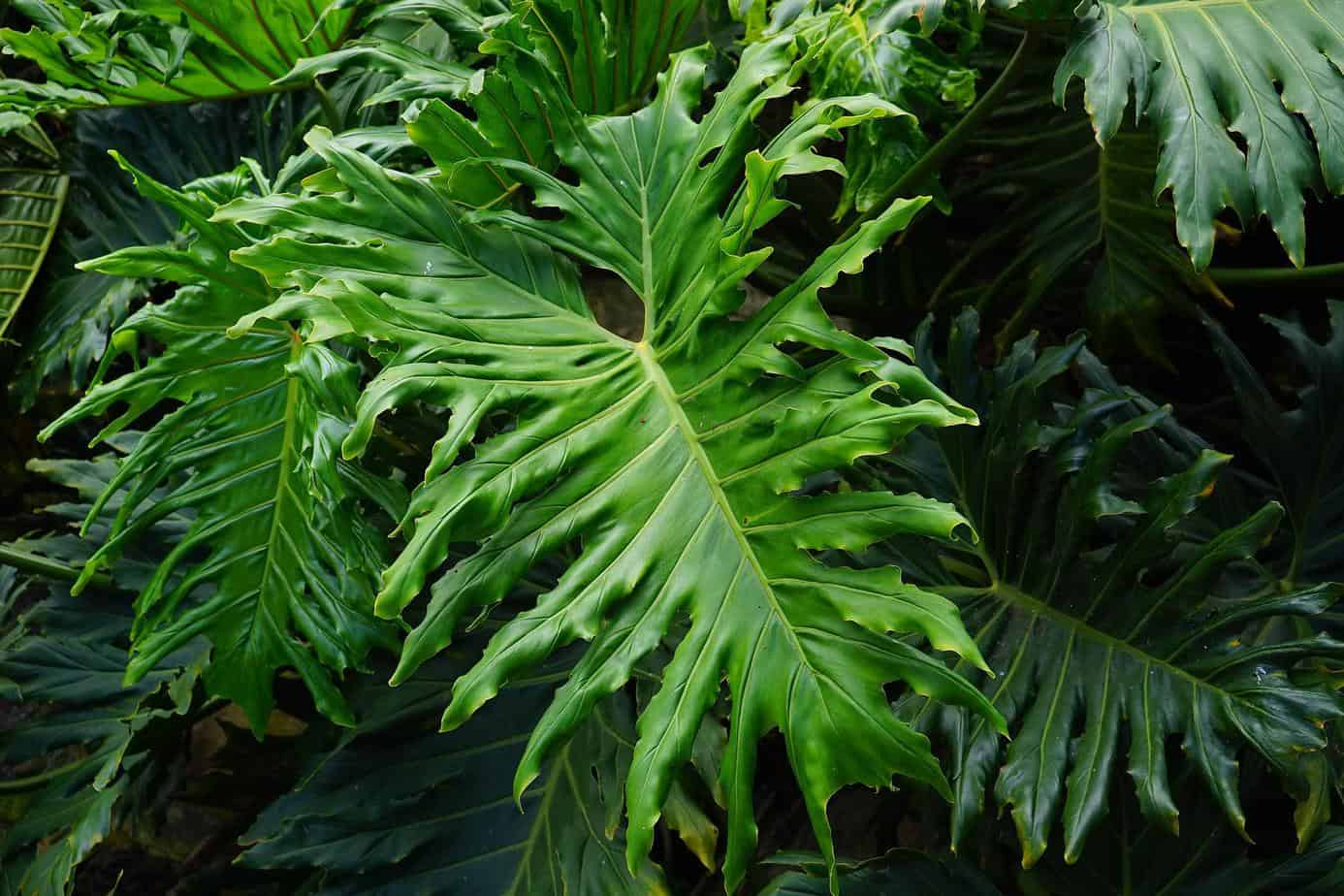
The Philodendron selloum or Philodendron bipinnatifidum comes from South America. The tree has many common names:
Lacy Tree Philodendron
Hope Philodendron
Hope Selloum
Horsehead Philodendron
Philodendron Hope Selloum
Tree Philodendron
Many gardeners get confused with the Philodendron xanadu when buying the plant. The plant is not a vining plant but a tree that does not grow upwards but spreads outwards. You can grow it as an indoor plant.
The hope philodendron is a self-heading plant, and it takes up loads of space, spreading out to five feet and more. It has shiny dark green deeply lobed leaves that grow three feet long. It also develops a trunk when matured, but the foliage does an excellent job of hiding it.
Philodendron Tree Care
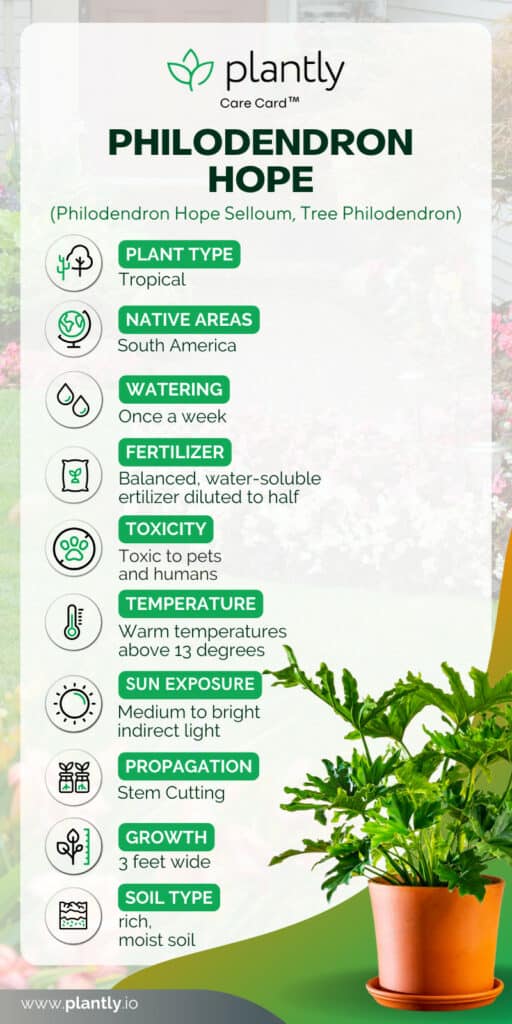
When it comes to caring for your Philodendron selloum, all it needs is some tender loving care with helpful tips seen here to keep it growing.
Best Potting Mix to Prevent Soggy Soil
Providing your aroid plant with suitable soil to breathe will keep it happy. The plant is sensitive compared to other plants in the Araceae family.
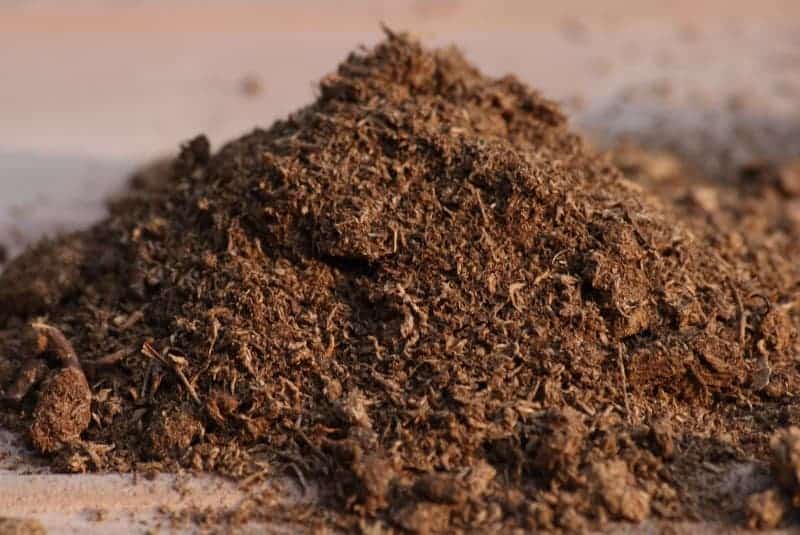
With some rich, moist soil made entirely of sphagnum peat moss, it will thank you. Hence, it is crucial to have a well-draining potting vessel that is also airy.
This indoor plant does not do well with wet feet and can develop root rot, making you and your plant sad.
So keep your tree happy with the suggested potting medium as regular potting soil does not work.
Preferred Lighting Situations

Your tree philodendron loves bright, indirect light and is a hardy plant that can survive different light conditions. While they live in deep shade with low light spaces, they are not happy. The best place inside the home is at the east, west, or north-facing window as it provides sufficient indirect sunlight.
Watering Needs to Prevent Root Rot
Okay, gardeners, this is a humungous plant, and you think this baby will need loads of water. Wrong as you do not want to overwater your plant, leading to rotting roots.
Neither do you want to underwater your Philodendron selloum as it leads to yellow leaves and withers? So, what should you do?
Your plant prefers to remain moist but not too dry or soggy. Hence, it helps to find a good balance with your water schedule.
So, water your plant at the base to get the soil moist and leave it for a few hours to soak up the nutrients.
Now, you do a finger test to see if the top half-inch is moist. If you feel moist soil, then water in a few days, and if dry, then water again and keep checking.
The rule of thumb is to water around the root ball found at the tree’s base, or you can poke holes into the soil using a pencil.
Then pour slowly over the wells for the water to seep down to the root ball.
Not Too Much Plant Food
When you fertilize your Philodendron selloum, it depends on where you place it. You have provided it with bright indirect light with the right amount of water.
Still, this tree does not need too much plant food. You can use a water-soluble fertilizer in spring and summer if you want. But we recommend using half the dose of strength.
Temperature and Humidity Needs

Your tree philodendron prefers temperatures between 60°-75°F (16°-24°C). Anything below this leads to stress on your plant. Hence, if you live in icy areas, we recommend bringing them inside as they are not frosted-tolerant.
Furthermore, the philodendron tree grows best in high humidity above 70%. The tropical plant enjoys a misting daily to keep it happy. Or you can use a pebble tray with water underneath it for added moisture.
But using a pebble tray might work at first, but as they grow, a humidifier will provide them with a humid environment to survive.
Growth and Potting
The hope philodendron can take up loads of space in a room. They act like a tree with a trunk and spread wide and quickly.
You will need to repot them every few years with its fast growth rate. If you notice aerial roots growing, tuck them into the container.
Pruning of this plant is usually done in the spring or fall months. Still, if those roots become unruly, you can prune them back using the following steps:
First, water your plant to reduce the shock it can experience.
Next, take a sharp knife and trim the leaf tips to an appropriate height.
Once sorting out the leaves, trim back the branches to the size you want for new shoots to fill up those empty spaces.
Finally, water again and place your plant in partial sunlight.
Propagating Hope Selloum With Leaf Stem Cutting
There are two ways you can propagate your tree stem cutting in a pot and water.
Stem Cuttings:
Prep a new pot with two inches of peat moss and sand.
Water well until you see the water flowing from the drainage holes.
Find a stem with two attached nodes, cut it off, and place it in the pot with the bottom node underneath the soil.
Water and cover the pot with a clear plastic bag to keep it moist.
Expose it to indirect light and check for new growth by looking around the stems.
When the roots reach three inches long, transplant them into a bigger container.
The best time to do this is in spring or summer for the best results.
Water Propagation:
Start by removing a six-inch stem from the mother plant with two nodes included. Pinch off the nodes to expose them. Take the leafless end and place it in water. Keep checking for new roots that can take up to four weeks to develop.
When the roots are two inches long, you can plant them in a pot.
Hope Philodendron Varieties
In the Philodendron genus, you can find different and unique species, as seen here:
Xanadu Philodendron
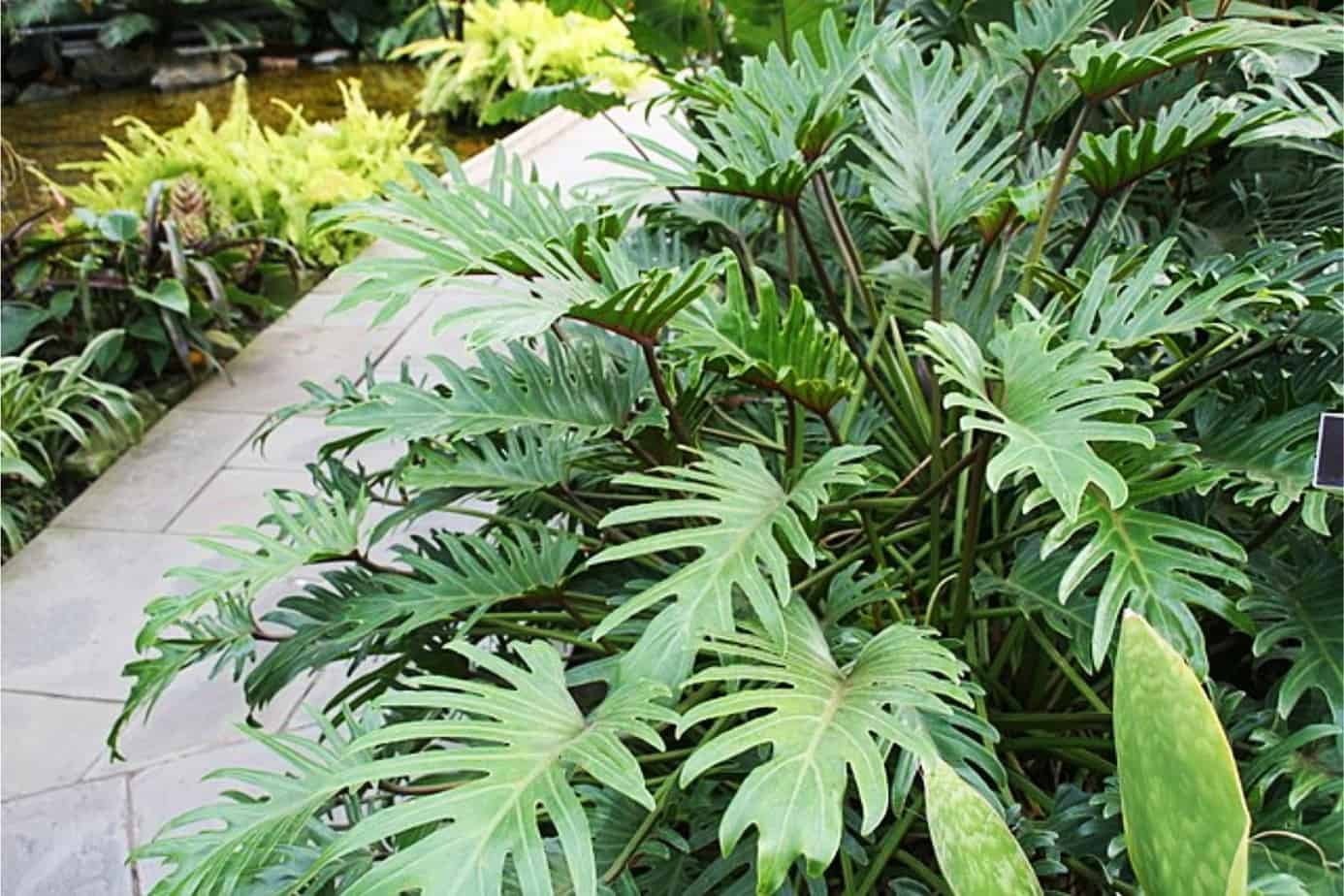
The plant’s stem forms a naturally mounded shape with delightful shades of colors in the foliage. It spread out, becoming divided as it matures. You can plant the Xanadu alone or use them with other colorful tropical plants grouped.
Philodendron Brasil
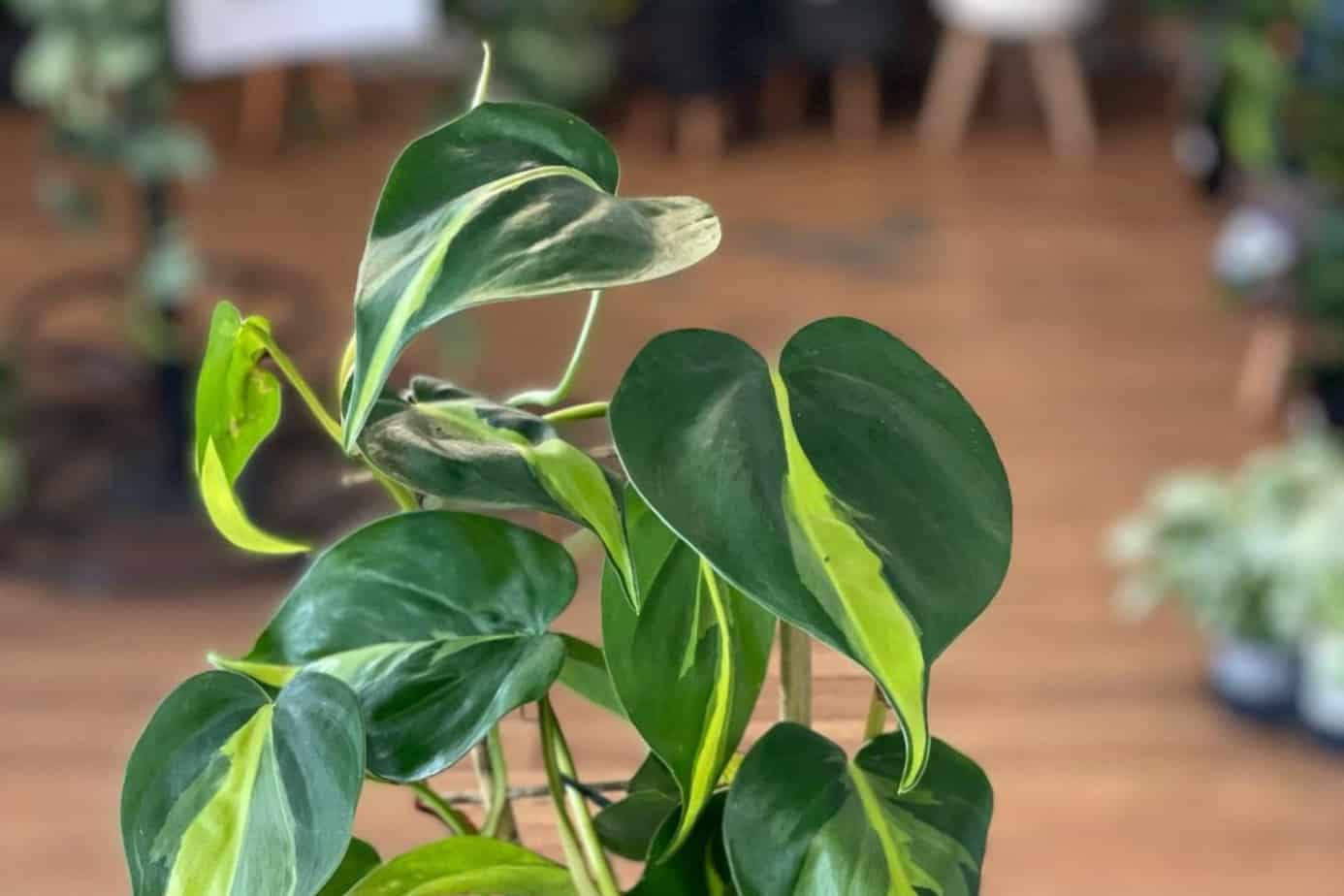
The plant is a cultivar of your heartleaf varieties with heart-shaped green leaves. The foliage has a variegated tint of cream, and white, with lime stripes down the center of the leaf. You find the stems in pink for added beauty.
Philodendron Moonlight
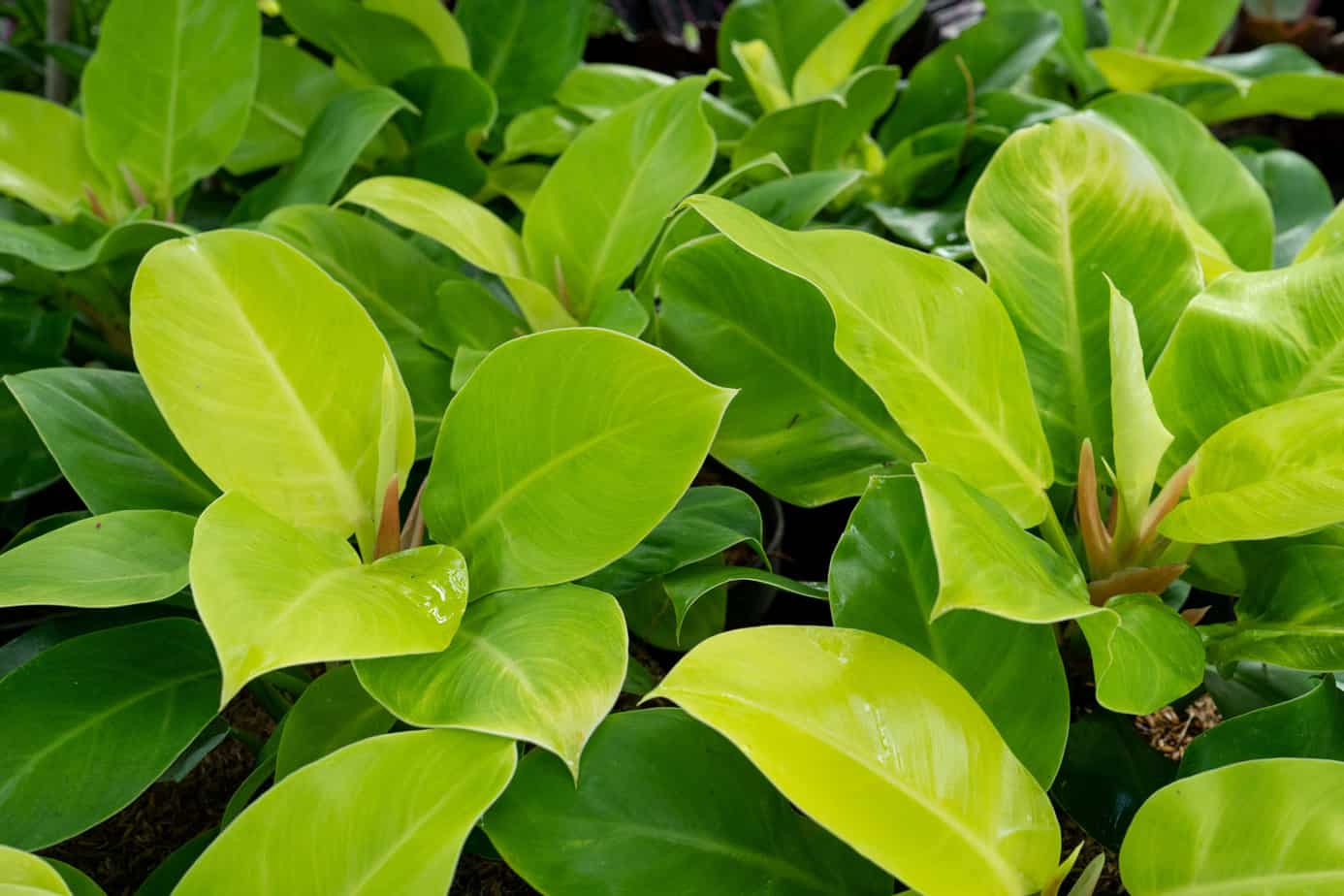
The plant is a hybrid of the common heartleaf philodendron and looks stunning indoors and outside. The leaves have a fluorescent green color, and it is a runner, not a climber.
Hope Selloum Diseases
Luckily there are some tell-tale signs that your hope philodendron is not doing well, and you can look out for the following:
Yellow leaves are a sign of too much water, and you can resolve it by letting the soil dry out more in between watering.
Brown leaf tips are overwatering and can become a serious concern. Hence, it can also be from too little water, and you will need to check the soil and follow our watering steps mentioned earlier.
Dark patches on the leaves can be from bacterial blight as the bacteria attacks the leaves resulting in rot. You cannot cure the disease, and you will need to throw your plant away. The best is to keep the leaves dry when watering to prevent this from happening.
Frequently Asked Questions
The tree’s leaves can measure about 35-inches in length with a total surface of 60-inch width.
If your plant has drooping leaves, it can be from too little or too much water. Adjusting your watering schedule helps to determine the problem. We recommend checking the top two inches of the soil to see if it is damp or dry.
If you want your hope philodendron selloum to trail, we recommend providing it with a sphagnum moss pole for the aerial roots to climb. If you prefer keeping your plant at a reasonable height, you can place those roots inside the ground.
Finding the hope philodendron selloum is rare and not sold at all local garden centers. But we have good news for you like this rare plant you can find here at Plantly to have it delivered to your door.
Whether you want to buy, sell or simply reach out to other plant enthusiasts, Plantly is the right place to be!


